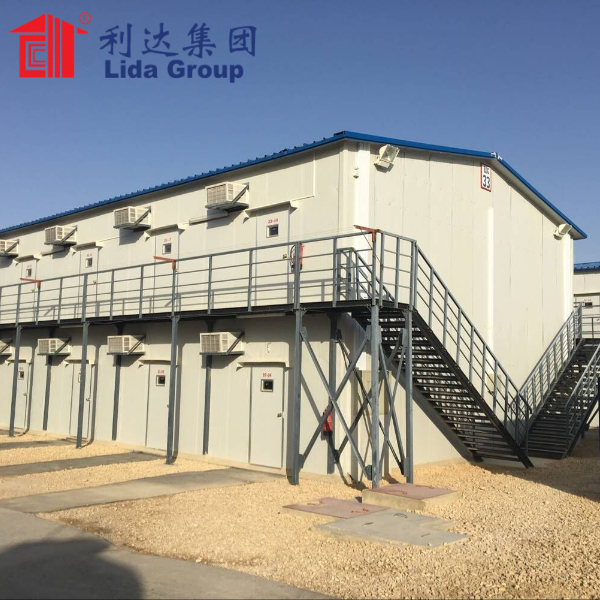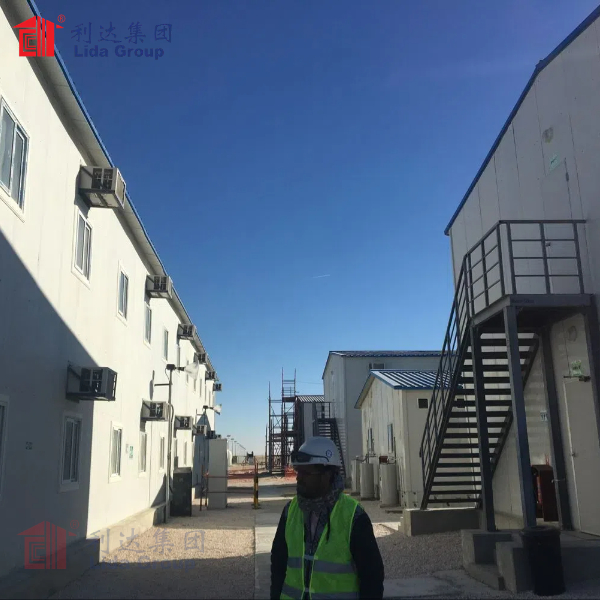In an era characterized by rapid urbanization and increasing environmental awareness, the demand for sustainable living solutions has never been more pressing. Traditional construction methods often contribute to significant waste, high carbon footprints, and prolonged building timelines, raising concerns about their long-term viability. Lida Group, a leader in the prefabricated building industry, has stepped up to meet these challenges by offering innovative and sustainable prefabricated buildings. This article delves into the features, benefits, and applications of Lida Group’s prefabricated buildings, showcasing how they are revolutionizing modern living with a focus on sustainability.
Understanding Prefabricated Buildings
What Are Prefabricated Buildings?
Prefabricated buildings, or prefab buildings, are structures constructed using pre-manufactured components that are assembled on-site. These components can include walls, roofs, and floors, all built in a factory environment under controlled conditions. This method contrasts with traditional construction, where buildings are constructed entirely on-site, often leading to inefficiencies. Lida Group specializes in creating high-quality prefabricated buildings that cater to a wide range of needs, from residential homes to commercial spaces and community facilities.
Key Features of Lida Group’s Prefabricated Buildings
- Sustainable Materials: Lida Group prioritizes the use of eco-friendly materials that minimize environmental impact. This includes recycled and sustainably sourced materials that contribute to the overall sustainability of the buildings.
- Energy Efficiency: Many of Lida Group’s prefabricated buildings are designed with energy efficiency in mind, incorporating high-quality insulation, energy-efficient windows, and sustainable energy sources like solar panels.
- Rapid Construction: Prefabricated buildings can be assembled quickly, often within weeks, significantly reducing construction time compared to traditional methods.
- Quality Control: Factory construction allows for rigorous quality assurance processes, ensuring that all components meet high safety and performance standards.
- Customization Options: Lida Group offers a variety of designs and configurations, allowing clients to tailor their prefabricated buildings to fit specific needs and preferences.
The Importance of Sustainable Living Solutions
1. Environmental Impact
The construction industry is one of the largest contributors to environmental degradation:
- Resource Depletion: Traditional construction consumes vast amounts of natural resources, including timber, minerals, and water. By utilizing sustainable materials and methods, Lida Group helps reduce the strain on these resources.
- Waste Reduction: Prefabrication typically generates less waste compared to traditional building methods. Precise manufacturing processes result in fewer materials being discarded, contributing to a more sustainable approach.
2. Energy Efficiency
Energy efficiency is a cornerstone of sustainable living:
- Lower Utility Costs: Buildings designed with energy-efficient systems can significantly reduce energy consumption, leading to lower utility bills for occupants.
- Reduced Carbon Footprint: By minimizing energy usage, Lida Group’s prefabricated buildings help reduce greenhouse gas emissions, contributing to a healthier planet.
3. Affordability
Sustainable living solutions can also be economically viable:
- Cost Savings: The efficiency of prefabricated construction often translates to lower labor and material costs, making sustainable options more accessible to a broader audience.
- Long-Term Investment: Energy-efficient buildings typically have lower operational costs over their lifespan, offering significant savings for homeowners and businesses alike.
The Design and Construction Process
1. Planning and Needs Assessment
The foundation of successful prefabricated building projects begins with thorough planning:
- Understanding Client Needs: Engaging with clients to assess their specific requirements, including the intended use of the building, number of occupants, and desired amenities, is crucial for effective design.
- Site Evaluation: Evaluating the site for accessibility, environmental conditions, and available resources helps inform the design process and ensures that the building is well-suited to its surroundings.
2. Modular Production
Once the design is finalized, the construction process begins off-site:
- Factory Production: Modular components are constructed in a controlled environment, allowing for precision and quality control. This typically involves assembling walls, roofs, and internal fixtures.
- Quality Assurance: Each component undergoes rigorous inspections to ensure safety and quality standards are met before being transported to the site.
3. Transportation and Assembly
The next phase involves transporting the prefabricated components to the construction site:
- Logistics Management: Coordinating transportation logistics is essential to ensure that components arrive on time and in good condition, minimizing delays in the construction process.
- On-Site Assembly: Once on-site, the components can be quickly assembled into the desired configuration, often within days. This rapid assembly is a significant advantage of prefabricated buildings.
4. Final Touches
After assembly, the final steps include:
- Interior Finishing: Adding furnishings and appliances ensures that the prefabricated buildings are ready for occupancy.
- Site Preparation: Ensuring that the surrounding area is safe and accessible for occupants, including landscaping and utility connections.
Benefits of Lida Group’s Prefabricated Buildings
1. Flexibility and Customization
Lida Group’s prefabricated buildings are designed with flexibility in mind:
- Customizable Configurations: Clients can choose layouts that best suit their needs, whether for residential, commercial, or community use. This adaptability makes it easy to create spaces that meet specific functional requirements.
- Expandable Designs: As needs change, Lida Group’s buildings can be easily expanded or reconfigured, allowing for growth without the need for extensive renovations or new construction.
2. Cost-Effectiveness
Investing in Lida Group’s prefabricated buildings can lead to substantial cost savings:
- Lower Construction Costs: The efficiency of using prefabricated materials and streamlined construction processes reduces overall costs, making these buildings an attractive option for budget-conscious clients.
- Operational Savings: Energy-efficient designs lead to reduced utility bills and maintenance costs, enhancing the overall return on investment.
3. Sustainability
Lida Group’s commitment to sustainability is evident in their prefabricated buildings:
- Eco-Friendly Practices: By utilizing sustainable materials and incorporating energy-efficient systems, Lida Group minimizes the environmental impact of their constructions.
- Reduced Carbon Footprint: Sustainable designs help lower greenhouse gas emissions, contributing to a healthier environment.
Applications of Lida Group’s Prefabricated Buildings
1. Residential Housing
Lida Group’s prefabricated buildings are ideal for various residential applications:
- Single-Family Homes: These homes provide a comfortable and stylish living environment for families, offering various layouts and designs to suit different preferences.
- Multi-Unit Housing: Modular designs are well-suited for multi-family developments, providing efficient and affordable housing solutions in urban areas.
2. Commercial Spaces
The versatility of prefabricated buildings extends to commercial applications:
- Office Spaces: Lida Group’s modular buildings can serve as modern office spaces, providing businesses with flexible and comfortable work environments.
- Retail Outlets: The quick assembly of prefabricated buildings makes them suitable for temporary or permanent retail spaces, allowing businesses to respond swiftly to market demands.
3. Educational Facilities
Prefabricated buildings can also serve as educational facilities:
- Classrooms and Administrative Offices: Lida Group can create flexible classroom spaces and administrative offices that meet the needs of educational institutions.
- Affordable Solutions: The cost-effectiveness of prefabricated buildings makes them an attractive option for schools seeking to expand their facilities.
4. Healthcare Facilities
The healthcare sector can leverage Lida Group’s prefabricated innovations:
- Temporary Clinics: In times of crisis, such as pandemics or natural disasters, prefabricated buildings can be rapidly deployed as temporary clinics or vaccination centers, ensuring communities have access to essential services.
- Long-Term Care Facilities: Permanent healthcare facilities can also be constructed using sustainable methods, ensuring they meet community needs efficiently.
5. Disaster Relief
Lida Group’s prefabricated buildings are invaluable in disaster relief efforts:
- Rapid Deployment: After natural disasters, prefabricated homes can be quickly assembled to provide temporary housing for displaced individuals and families.
- Flexible Solutions: They can be customized to meet the specific needs of affected communities, ensuring adequate shelter is available during recovery efforts.
Case Studies: Successful Prefabricated Building Projects
Case Study 1: Urban Housing Development
Challenge: A city faced a housing shortage due to rapid population growth, necessitating quick and affordable solutions.
Solution: Lida Group designed prefabricated homes that could be constructed rapidly to meet the demand for housing.
Outcome: The project was completed ahead of schedule, providing quality homes for families and helping to alleviate the housing crisis in the area.
Case Study 2: Temporary Office Spaces
Challenge: A technology firm required temporary office space to accommodate a project team during a critical development phase.
Solution: Lida Group delivered modular office units that included meeting rooms, workstations, and break areas.
Outcome: The quick deployment of the modular offices allowed the company to maintain productivity without disruption, and the flexibility of the design enabled easy reconfiguration as project needs changed.
Case Study 3: Educational Facility Expansion
Challenge: A local school district faced overcrowding due to increased enrollment.
Solution: Lida Group supplied modular classrooms that could be quickly assembled on-site, providing additional space for learning.
Outcome: The new classrooms were ready for use in a fraction of the time it would have taken for traditional construction, allowing the school to meet its needs promptly.
The Future of Prefabricated Buildings
Trends Shaping the Industry
The future of prefabricated buildings will be influenced by several key trends:
1. Increased Demand for Sustainable Practices
As environmental awareness continues to grow, industries are under pressure to adopt sustainable practices:
- Eco-Friendly Solutions: Companies prioritizing sustainability will appeal to a growing market of environmentally conscious consumers.
- Regulatory Changes: Governments may implement stricter regulations on environmental impact, driving the need for sustainable building solutions.
2. Technological Advancements
Advancements in technology will enhance the efficiency of prefabricated buildings:
- Smart Technologies: The integration of IoT devices will enable real-time monitoring and optimization of living conditions and resource usage.
- Automation: Automation in production processes can improve efficiency and reduce labor costs.
3. Customization and Modularity
The demand for customizable and modular designs will continue to grow:
- Flexible Accommodation Solutions: Businesses will increasingly require prefabricated buildings that can be easily adapted to changing operational needs.
- Rapid Deployment: Prefabricated solutions will allow for quick construction and minimal disruption, catering to the fast-paced demands of modern industries.
Commitment to Innovation
Leading firms in the prefabricated housing market, including Lida Group, remain dedicated to innovation:
- Research and Development: Continuous investment in R&D ensures that companies stay at the forefront of technological advancements in prefabricated construction.
- Client Collaboration: By working closely with clients, firms can develop tailored solutions that meet specific operational requirements and sustainability goals.
Conclusion
Lida Group’s prefabricated buildings represent a significant advancement in providing sustainable living solutions. Their focus on rapid deployment, cost-effectiveness, and sustainability makes them an ideal choice for various applications, from residential housing to commercial spaces and disaster relief.
As the demand for innovative housing solutions continues to grow, prefabricated buildings will play a crucial role in shaping the future of sustainable living. The potential for innovation and improvement in living standards is immense, and Lida Group is well-positioned to lead this transformative movement.
In a world where efficiency, sustainability, and quality are paramount, Lida Group’s prefabricated buildings provide a forward-thinking solution to modern housing challenges. Through strategic investments and a commitment to excellence, the prefabricated building sector is poised to enhance living conditions for many and contribute positively to the evolution of housing solutions. The journey toward a more sustainable future in construction is just beginning, and the potential for growth and innovation is limitless.
Contact Us
Post time: Jun-17-2025


